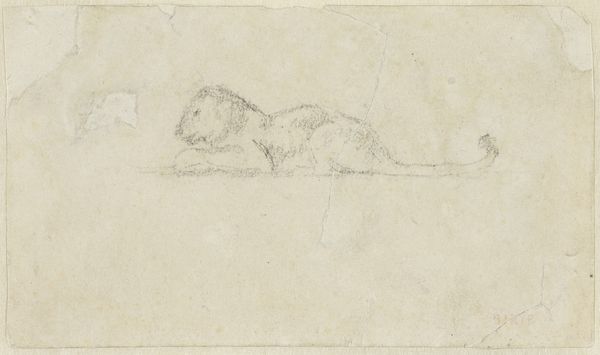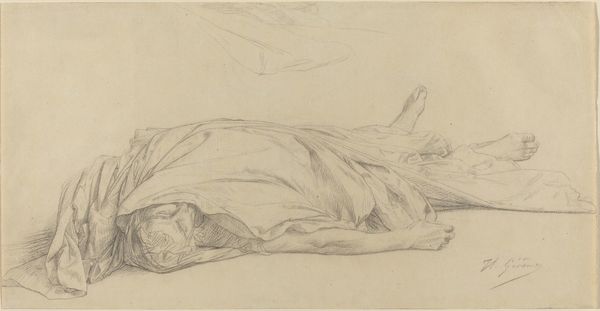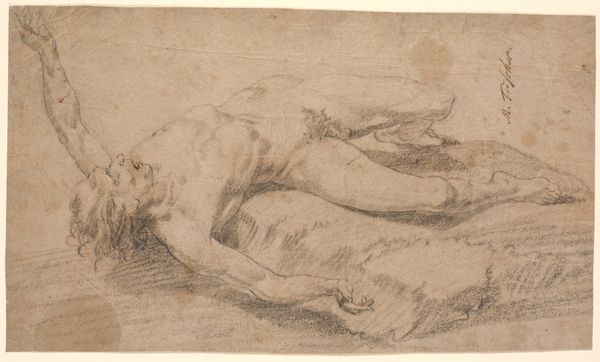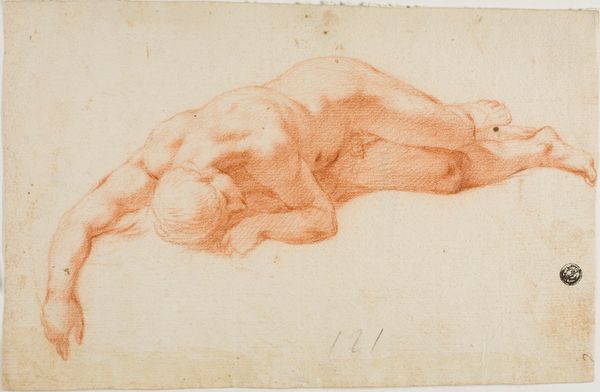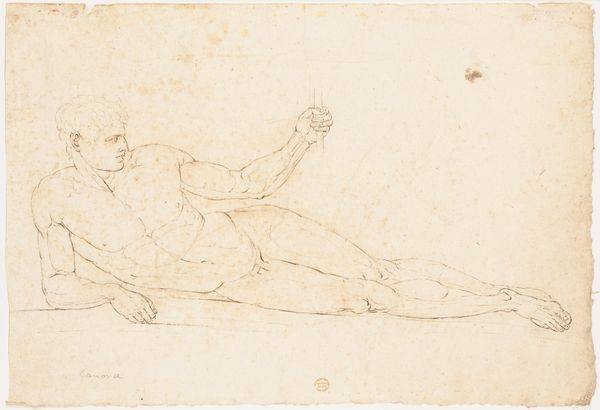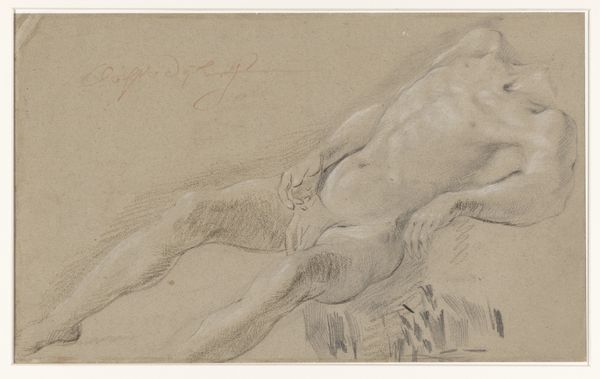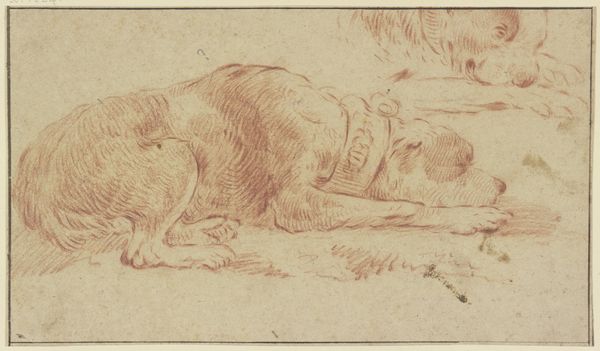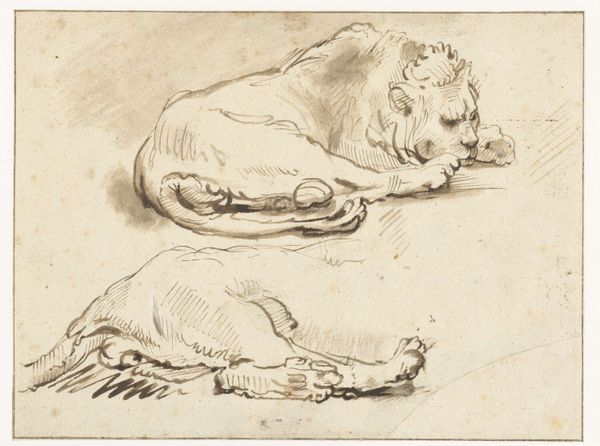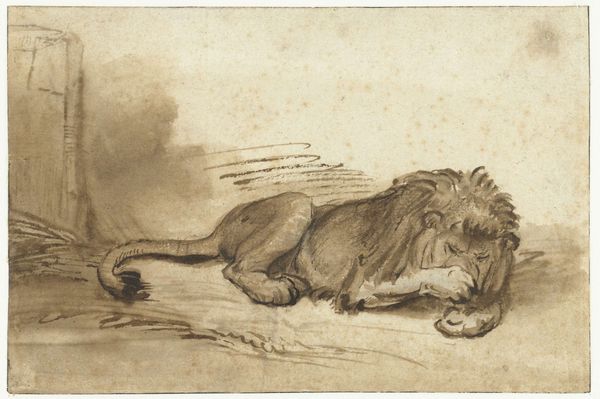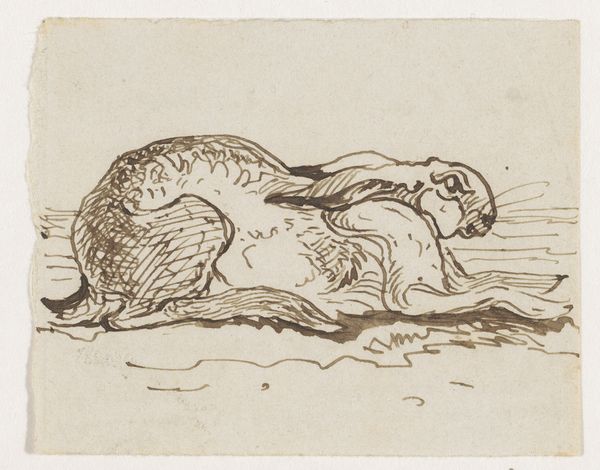
drawing, ink, graphite
#
drawing
#
narrative-art
#
baroque
#
landscape
#
figuration
#
ink
#
graphite
Copyright: Public Domain
Editor: This drawing, "Toter Elefant und zwei Figuren" or "Dead Elephant with Two Figures," by Stefano della Bella, made with ink and graphite around 1655, is quite striking. The elephant dominates the scene, lying prone while these diminutive figures stand nearby. It's interesting how much attention is paid to the elephant's texture. What strikes you most about this piece? Curator: Considering the materials and likely function of this drawing, I immediately think about its purpose within della Bella's workshop. Was it a study for a larger commission, or an artwork in and of itself, meant to be sold? Look at the quality of the paper, the deliberate use of ink and graphite to create varying tones and textures – these details speak to a certain level of material investment. This suggests a potential buyer base beyond a simple preparatory sketch. The death of an elephant wasn't just a random occurrence; elephants held considerable cultural and symbolic value, tied to trade, empire, and luxury goods. Editor: So, you're saying that the choice of subject, the materials, even the act of depicting this dead elephant, had an economic and social dimension? Curator: Precisely. Della Bella’s work reflects an emerging consumer culture where even sketches held market value, catering to a specific clientele interested in both exotic subject matter and the skillful representation of textures and forms, made possible by the very specific materiality of the art. These kinds of works tell us a lot about what people valued, traded, and consumed, both literally and figuratively, in the 17th century. What are your thoughts? Editor: That’s really changed my perspective. I was so focused on the emotional impact, but thinking about the materials and the market opens up a whole new understanding of the work's context. It makes me want to learn more about the paper he used and how readily available it was, which is a perspective I really appreciate. Thanks!
Comments
No comments
Be the first to comment and join the conversation on the ultimate creative platform.
